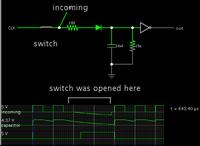hithesh123
Full Member level 6

How do I detect if a signal is low for a particular period of time say 100usecs.
The signal is usually a pulse with time period of say 50usecs.
I can't poll or keep waiting. It has to be interrupt based.
The signal is usually a pulse with time period of say 50usecs.
I can't poll or keep waiting. It has to be interrupt based.




